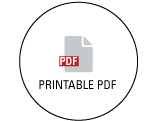M.W. Roomi, N.W. Roomi, M. Rath and A. Niedzwiecki
Dr. Rath Research Institute, Cancer Division, Santa Clara, CA, USA
Presented at:
100th Annual Meeting of the American Association for Cancer Research, Denver, Colorado, April 18-22, 2009.
Published in:
Proceedings of the 100th Annual Meeting of the AACR, Abstract #2357, p 571.
Abstract
Introduction:
Uterine leiomyosarcoma (LMS) is a rare malignant tumor with poor prognosis that arises from smooth muscle lining wall of uterus. The exact causes of LMS are not known, but there are genetic and environmental risk factors associated with it. LMS continues to be a deadly disease. Most patients receive multimodality therapy with surgery followed by chemotherapy drugs/ or radiation therapy. Current chemotherapy drugs are minimally effective with 80% of treated patients having progression of disease. Adjuvant therapy after optimal cytoreduction does not decrease the rate of recurrence. Aggressive surgical cytoreduction at the time of initial diagnosis offers the possibility of prolonged survival.
Objective:
In the current study we investigated the effect of the nutrient mixture (NM) on proliferation, invasive potential, MMPs, and apoptosis of human LMS cell line SK-UT-1. NM is a specific mixture of lysine, proline, ascorbic acid and green tea extract, which was shown to have a very potent synergistic antitumor activity through inhibiting MMPs activity.
Material and Method:
Human LMS cell line SK-UT-1 (ATCC) was grown in DEME media with 10% FBS and antibiotics in 24-well tissue culture plates. At near confluence, the cells were tested with NM at 0, 50, 100, 250, 500 and 1000 μg/ml concentration in triplicate at each dose. Cell proliferation was assayed by MTT assay, MMPs by gelatinase zymography, invasion through Matrigel, apoptosis using live green caspase detection kit (Molecular Probe), and morphology by H&E staining.
Results:
NM was not toxic to SK-UT-1 cells at 250 µg/ml concentration, but exhibited 20% and 40% toxicity at 500 and 1000 µg/ml. Zymography did not show any bands either for MMP-2 or MMP-9. However, on PMA treatment stimulated MMP-9 expression, both inactive and active forms in equal proportions. NM inhibited the secretion of both active and inactive forms of MMP-9 in a dose response fashion with total inhibition at 1000 μg/ml concentration. Invasion through Matrigel was inhibited by 10%, 65%, 95%and 100% at 50, 100, 250 and 1000 μg/ml NM respectively. NM induced slight apoptosis at 100 μg/ml and significant at 250 and 500 μg/ml concentration. H&E showed slight changes at the highest dose.
Conclusions:
Our results suggest that NM significantly inhibited MMP secretion, invasion through Matrigel, and apoptosis, important parameters for cancer prevention, suggesting NM has the potential for therapeutic use in the treatment of LMS.
Comment
Uterine leiomyosarcoma (LMS) is a rare malignant tumor with poor prognosis that arises from smooth muscle lining wall of uterus. Most patients receive multimodality therapy with surgery followed by chemotherapy drugs/ or radiation therapy. Current chemotherapy drugs are minimally effective with 80% of treated patients having progression of disease. We investigated the effect of the nutrient mixture (NM) containing lysine, proline, ascorbic acid and green tea extract on proliferation, invasive potential, MMPs, and apoptosis of human LMS cell line SK-UT-1. NM was not toxic to SK-UT-1 cells at 250 µg/ml concentration, but exhibited 20% and 40% toxicity at 500 and 1000 µg/ml. Though zymography did not detect MMP-2 or MMP-9 in normal cells, PMA treatment stimulated MMP-9 expression, both inactive and active forms in equal proportions. NM inhibited the secretion of both forms of MMP-9 in a dose response fashion with total inhibition at 1000 μg/ml concentration. Invasion through Matrigel was inhibited by 10%, 65%, 95%and 100% at 50, 100, 250 and 1000 μg/ml NM respectively. NM induced slight apoptosis at 100 μg/ml and significant at 250 and 500 μg/ml concentration. These results are significant as they suggest that this non-toxic formulation NM has the potential for therapeutic use in the treatment of LMS.
